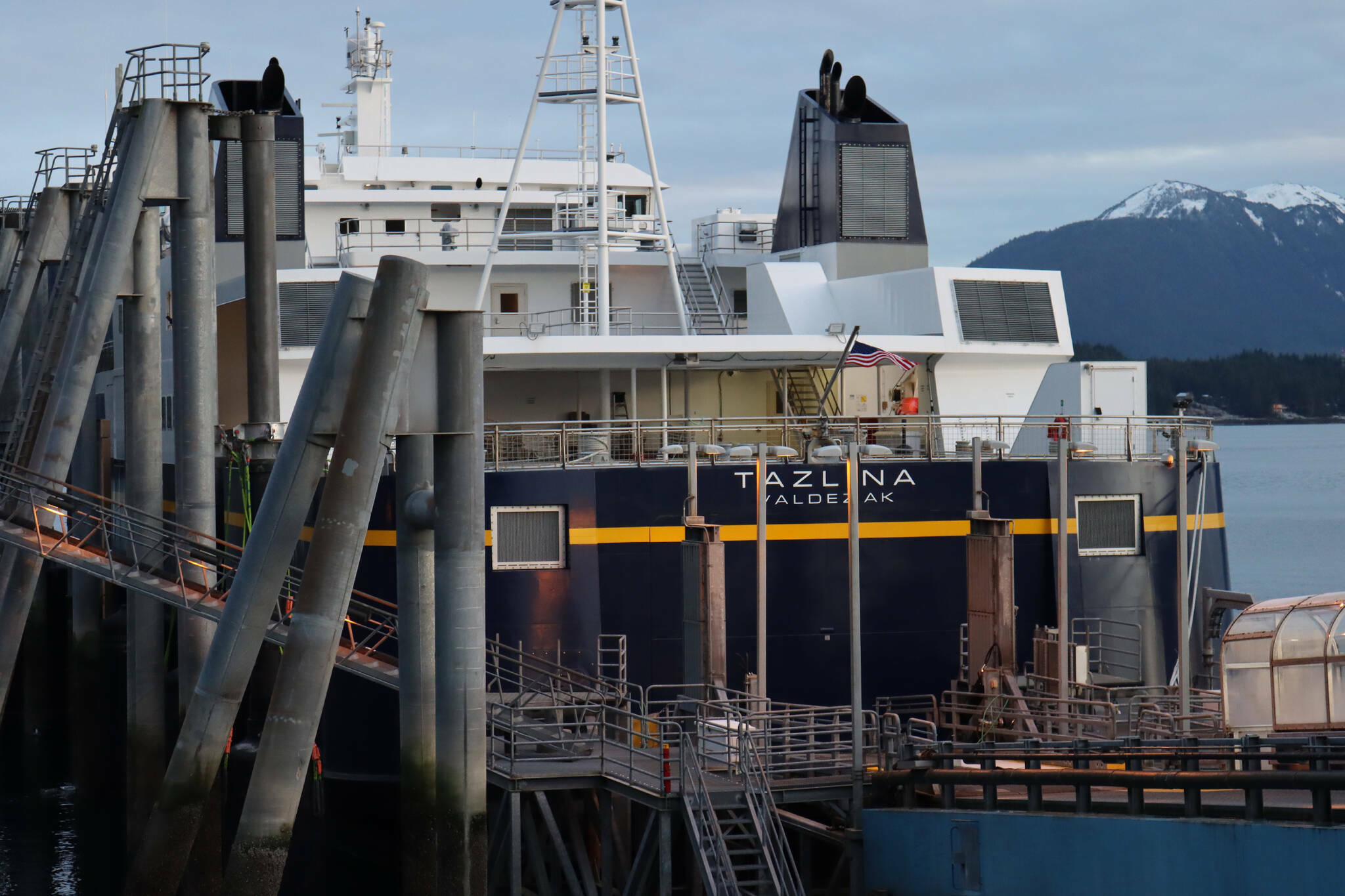Over a quarter of a billion dollars is on its way to fund six key projects for the Alaska Marine Highway System via grant funding awarded by the Federal Transit Administration, originally authorized under the bipartisan infrastructure bill signed by the president in November 2021.
The federal funding toward the projects set to benefit the state’s ferry system totals about $285 million dollars and requires the state of Alaska to match a portion of the funds that totals more than $100 million.
The six projects to be funded include:
— $72.1 million to fund specific upgrades/modernization projects to Kennicott, Tazlina, Matanuska and Columbia deemed necessary for service and environmental benefits. The project requires a state funding match of $18 million. According to the project grant application, the fund will go toward upgrades to exhaust emissions of the Kennicott, the construction and modernization of the Tazlina crew quarters, safety improvements to the Matanuska and the replacement of the controllable pitch propeller for the Columbia.
— $68.5 million will go toward funding the replacement of the 58-year-old Tustumena with a new diesel-electric ship. The project requires a state funding match of $18 million. According to the project grant application, the new vessel’s construction is expected to finish by December 2026 and the design has been underway since June 2022.
— $45.5 million will fund upgrades to dock infrastructure at Juneau’s Auke Bay, Chenega, Tatitlek, Pelican and Cordova. The project requires a state funding match of $11.3 million, according to the grant application. The construction and upgrades to all the dock projects are expected to be completed by October 2025.
— $46.2 million to fund the construction of an electric ferry using battery electric propulsion that will run routes from Ketchikan/Saxman to Annette Bay/Metlakatla, Haines/Klukwan to Skagway and Homer to Seldovia. According to the project grant application, the construction of the new vessel is outlined to be complete by October 2025 and will replace/augment the existing vessels running the routes.
— $8.6 million to fund the planning process and design for a future replacement of aging ferries with new hybrid diesel/electric vessels. The project requires a state funding match of $2.1 million.
— $44.8 million to fund additional hours of operation to provide more reliable and predictable service to rural communities. The project requires 50% state funding match.
In a news conference Thursday afternoon with Sen. Lisa Murkowski, an Alaska Republican, U.S. Transportation Secretary Pete Buttigieg and Federal Transit Administration Administrator Nuria Fernandez, Murkowski called the award “historic funding” in supporting the improvement and modernization of the system critical to the 35 coastal Alaska communities that rely on it.
Buttigieg and Fernandez characterized Murkowski as “instrumental” in the process to include the funding toward ferries in the legislation. Alaska Sen. Dan Sullivan, a Republican, did not attend the conference call but did release a statement commending Murkowskis’s efforts.
“The funding awards announced today are great news for the thousands of Alaskans who rely on the ferry system, which serves an enormous expanse of coastline—roughly the distance between St. Louis and San Francisco. These funds will help deliver a safer and more reliable means of transportation by updating existing AMHS vessels, finally procuring a replacement for the Tustumena, and repairing deteriorating portside infrastructure,” he said in the prepared statement.
Murkowski said in the conference that she has spoken with the governor and state Sen. Bert Stedman, a Sitka Republican, and reminded them a “match is going to be required, so when you’re working through your budget, make sure we’re going to be able to leverage these dollars.”
“The state has an obligation and responsibility and I am going to do everything in my power as a member of the Alaska delegation to make sure that we take full advantage of this, and to put it bluntly, that we don’t mess this up,” she said.
Murkowski emphasized that it is up to the state to figure out how the AMHS will be sustainable moving forward beyond the federal grant money.
“These dollars are not unlimited,” she said. “It’s going to take some money — but it’s worth the investment.”
• Contact reporter Clarise Larson at clarise.larson@juneauempire.com or (651)-528-1807. Follow her on Twitter at @clariselarson.

